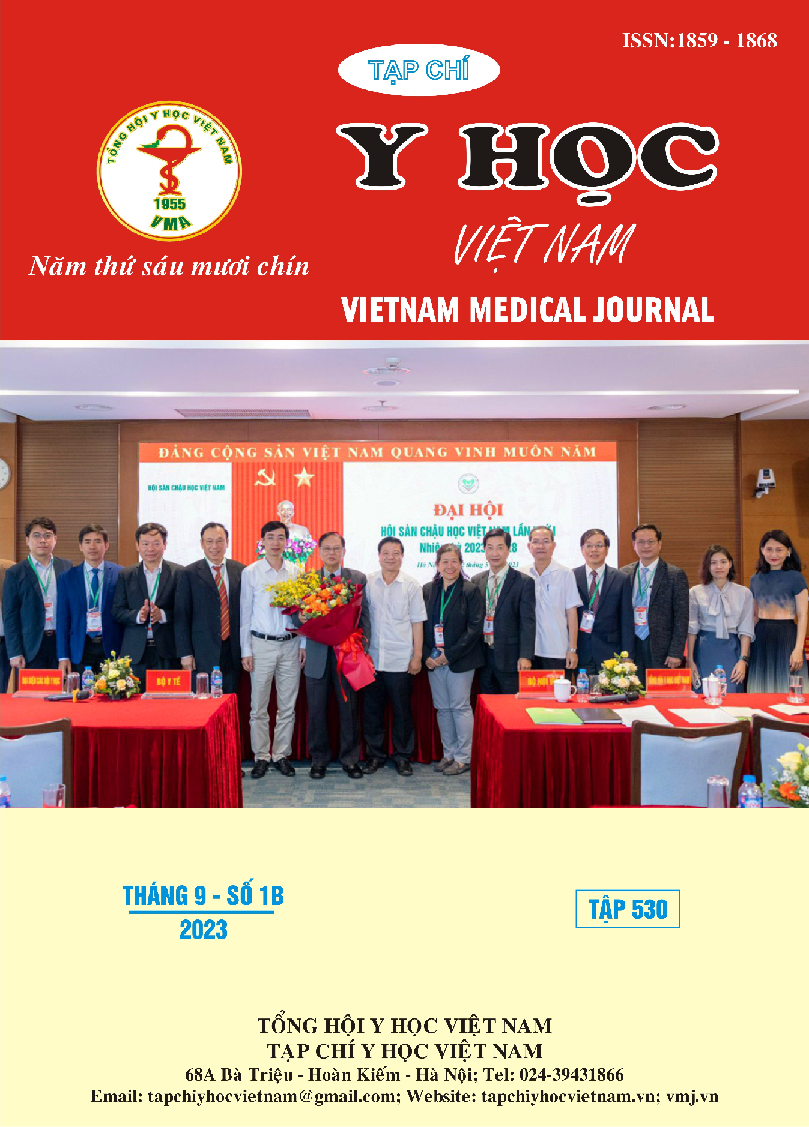SOME RELATED FACTORS ON THE RESULTS OF DECOMPRESSIVE CRANIOTOMY PROCEDURE FOR PATIENTS WITH SEVERE TRAUMATIC BRAIN INJURY THE CENTRE OF NEUROSURGERY VIETDUC UNIVERSITY HOSPITAL
Main Article Content
Abstract
We conducted a study with the aim of analyzing some related factors that impact the results of the treatment of severe traumatic brain injury by decompressive craniotomy. This is a study using a cross-sectional descriptive method performed on 45 patients with severe traumatic brain injury at the Centre of Neurosurgery of VietDuc University Hospital. Results: There was a relationship between pupillary reflex, degree of midline compression, and intracranial pressure in the treatment results. If the pupil on one side was dilated or lost reflexes, the procedure result was 9,38 times worse than that of two undilated, reflex pupils (95% CI: 1,64 – 53,62). If the midline compression was more than 5mm, the procedure results were 4,94 times worse than those of patients with a midline compression of 5mm or less (95% CI: 1.04 - 25.88). if the bottom tank is removed, the treatment results are 7,778 times worse than the normal bottom tank, statistically significant with 95%CI: 1.17 - 51.92. Other factors like arachnoid hemorrhage and intracranial pressure were not found to be related to the treatment outcome after 3 months (p > 0.05).
Article Details
Keywords
: traumatic brain injury; decompressive craniotomy.
References
2. Sahuquillo J, Dennis JA. Decompressive craniectomy for the treatment of high intracranial pressure in closed traumatic brain injury. Cochrane Database Syst Rev. 2019;12(12): CD003983.doi:10.1002/14651858.CD003983.pub3
3. Hoàng Chí Thành. Nghiên cứu ứng dụng mở nắp sọ giảm áp trong phẫu thuật máu tụ nội sọ cấp tính do CTSN. Luận văn tốt nghiệp thạc sỹ y học. Đại học Y Hà Nội; 2002.
4. Huang YH, Lee TC, Lee TH, Liao CC, Sheehan J, Kwan AL. Thirty-day mortality in traumatically brain-injured patients undergoing decompressive craniectomy. J Neurosurg. 2013;118(6):1329-1335. doi:10.3171/2013.1.JNS121775
5. Kim JJ, Gean AD. Imaging for the diagnosis and management of traumatic brain injury. Neurother J Am Soc Exp Neurother. 2011;8(1):39-53. doi:10.1007/s13311-010-0003-3
6. De Bonis P, Pompucci A, Mangiola A, et al. Decompressive craniectomy for elderly patients with traumatic brain injury: it’s probably not worth the while. J Neurotrauma. 2011;28(10):2043-2048. doi:10.1089/neu.2011.1889
7. Marmarou A, Lu J, Butcher I, et al. Prognostic value of the Glasgow Coma Scale and pupil reactivity in traumatic brain injury assessed pre-hospital and on enrollment: an IMPACT analysis. J Neurotrauma. 2007;24(2):270-280. doi:10.1089/ neu.2006.0029
8. Lemcke J, Ahmadi S, Meier U. Outcome of patients with severe head injury after decompressive craniectomy. Acta Neurochir Suppl. 2010;106:231-233. doi:10.1007/978-3-211-98811-4_43
9. Marmarou A, Anderson RL, Ward JD, et al. Impact of ICP instability and hypotension on outcome in patients with severe head trauma. J Neurosurg. 1991; 75(Supplement):S59-S66. doi:10.3171/ sup.1991.75.1s.0s59


